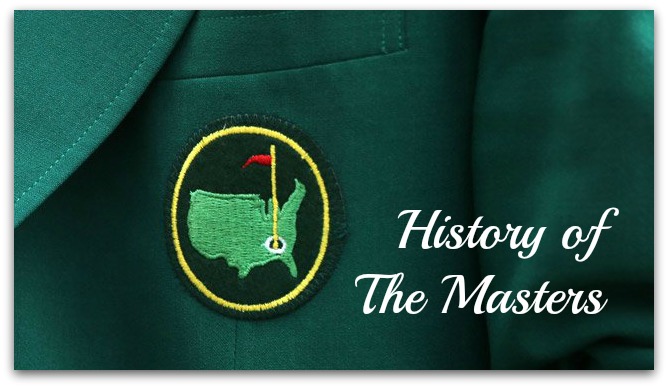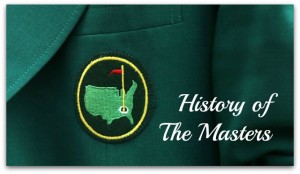This week in 1934, golfer Horton Smith won the first ever Masters golf tournament. From Uncle John’s Bathroom Reader Tees off on Golf, here’s a look at the storied and tumultuous history of “the Super Bowl of Golf.”
Bobby Jones was one of the best golfers ever to play the game. A refined gentleman from a wealthy Southern family, Jones never turned pro—he considered playing golf for money beneath his social station. Yet, despite his amateur status, he dominated golf throughout the 1920s. In 1930 he won what was then considered golf’s Grand Slam, with victories in the U.S. Open, British Open, U.S. Amateur, and British Amateur. With the Grand Slam under his belt, that same year Jones decided—at the ripe old age of 28—to retire from competitive golf and turn his sights toward building his dream golf course. With a handful of rich cronies, he purchased 365 acres outside of Augusta, Georgia, and formed one of the most exclusive country clubs in America: the Augusta National Golf Club.
MAGNOLIA LANE
From the beginning, Augusta National, as it is now known, was dedicated to an upper-class vision of the golfing life. Only the richest and most influential businessmen (emphasis on men—only three women have ever been members of the club) were invited to apply for membership. The club’s most famous member: Dwight D. Eisenhower, who visited Augusta regularly before, during, and after his presidency.
Jones and his buddies wanted the grounds of their new club to reflect its high-class membership. With that in mind, they hired acclaimed English golf course architect Dr. Alister Mackenzie to design it. And under his hand, landscaping at Augusta National became an art form. Magnolia trees and azaleas planted back in the 1850s—when the property belonged to a Belgian baron with a taste for expensive horticulture—gave them a head start. By the time the course opened in 1932, the clubhouse, grounds, and the links themselves looked like a museum replica of plantation days in the Old South.
THE AUGUSTA NATIONAL INVITATIONAL
With the best golf course money could buy, it was only natural that the club members would want to host a major tournament. After a deal to host the 1933 U.S. Open fell through, they decided to inaugurate their own annual tournament. The first one was held in the spring of 1934 and was called the Augusta National Invitational Tournament (the name wouldn’t be changed to the Masters until 1939).
Bobby Jones was such an important figure in the golfing world that he had no trouble convincing the game’s greatest players to come play at Augusta. Byron Nelson, Jimmy Demaret, Ben Hogan, and Sam Snead were among the legendary players who won early Masters tournaments and helped give the event the credibility it now enjoys. Both Arnold Palmer and Jack Nicklaus mastered the course— they hold ten Masters titles between them. Their rivalry during the 1960s focused world attention on Augusta National and added to its legend.
THE GREEN JACKET
The membership of Augusta National has always been obsessed with tradition. In 1937 club members began wearing green jackets that bore the club crest to distinguish themselves from common fans. When Sam Snead won the first of his three Masters titles in 1949, he was presented with his own honorary club jacket—and a new tradition was born. Every year since then, the new champion has been given a green jacket by the previous year’s winner. Having won the Masters, the champion gets to take his green jacket home with him for a year. After that, he is given a locker in the exclusive Champions Locker Room, where his jacket will be waiting for him whenever he returns to Augusta.
Along with the green jacket, Masters winners receive a lifetime exemption from qualifying for future tournaments. In other words, once a golfer has won the Masters, he is welcome to come back and play every year for the rest of his life—he has a permanent invitation. Many golfing legends have taken advantage of this clause, returning to Augusta every spring, even long after their game has passed its prime. Arnold Palmer played his 50th consecutive Masters in 2004 (he hadn’t made the cut since 1983).
Older past champions traditionally start off the tournament by ceremonially hitting the first ball.
CONTROVERSY BENEATH THE PINES
The Old South traditions that have been so key to the tournament’s prestige have also been the source of much of its negative publicity. Some of Augusta National’s traditions are of the sort that antidiscrimination laws were designed to stop. The darkest chapter of the PGA’s history was the organization’s failure to issue tour cards to black golfers until 1961. Even then, the Masters lagged behind the rest of the golf world. Any player who wins a Tour event is supposed to receive an automatic invitation to the next year’s Masters. But black golfers like Charlie Sifford found that their wins didn’t count with the Masters invitation committee. They were not invited. In 1973, 18 members of Congress wrote to Augusta National to express concern over their policies, but the club ignored them. Finally, in 1975 Lee Elder became the first black golfer to play at Augusta after winning the Monsanto Open. Elder may have integrated the tournament, but no African American was invited to apply for membership in the club itself until 1990.
A GENTLEMAN’S GAME
Although the Masters is, to many golfers, the most important professional tournament on the PGA Tour, Augusta National still honors the principles of amateurism as exemplified by the life and career of Bobby Jones. Five spots in the tournament are held aside for the best amateur players: the winner and runner-up of the U.S. Amateur; the winner of the British Amateur; the winner of the U.S. Amateur Public Links tournament; and the champion of the U.S. Mid- Amateur tournament. The top floor of the Augusta National clubhouse is called the Crow’s Nest and is used to provide housing for amateur players during the tournament. In the old days, when amateur events were a more important part of big-time golf, they needed bunk beds to house all of the young players staying in the Crow’s Nest. These days, there are only five beds.









